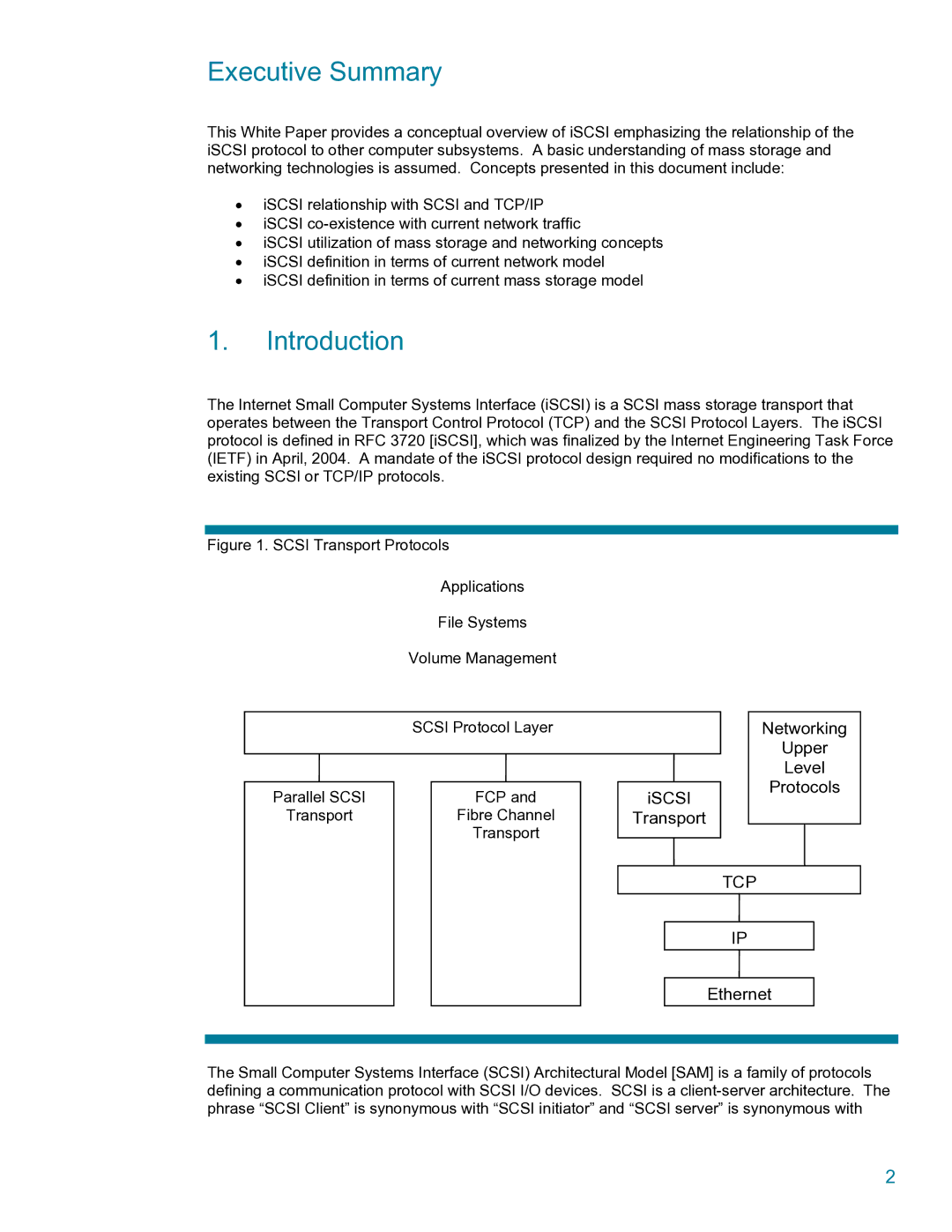
Executive Summary
This White Paper provides a conceptual overview of iSCSI emphasizing the relationship of the iSCSI protocol to other computer subsystems. A basic understanding of mass storage and networking technologies is assumed. Concepts presented in this document include:
•iSCSI relationship with SCSI and TCP/IP
•iSCSI
•iSCSI utilization of mass storage and networking concepts
•iSCSI definition in terms of current network model
•iSCSI definition in terms of current mass storage model
1.Introduction
The Internet Small Computer Systems Interface (iSCSI) is a SCSI mass storage transport that operates between the Transport Control Protocol (TCP) and the SCSI Protocol Layers. The iSCSI protocol is defined in RFC 3720 [iSCSI], which was finalized by the Internet Engineering Task Force (IETF) in April, 2004. A mandate of the iSCSI protocol design required no modifications to the existing SCSI or TCP/IP protocols.
Figure 1. SCSI Transport Protocols
Applications
File Systems
Volume Management
SCSI Protocol Layer
Parallel SCSI | FCP and | iSCSI |
Transport | Fibre Channel | Transport |
| Transport |
|
Networking
Upper
Level
Protocols
TCP
IP
Ethernet
The Small Computer Systems Interface (SCSI) Architectural Model [SAM] is a family of protocols defining a communication protocol with SCSI I/O devices. SCSI is a
2
